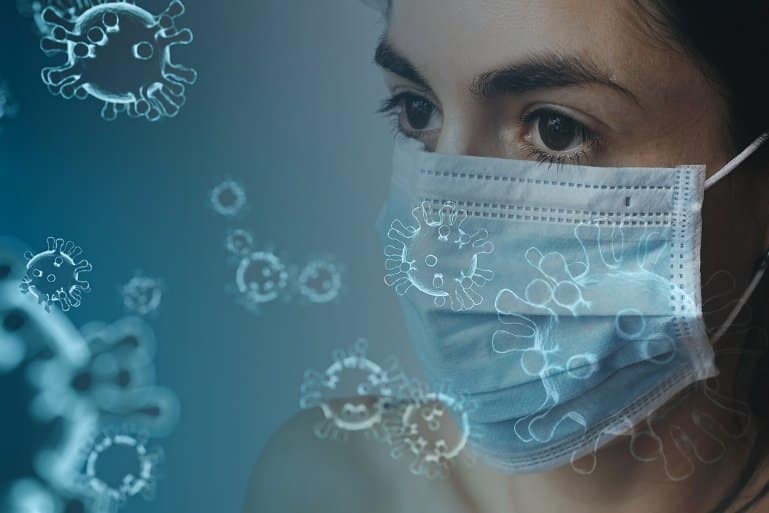Summary: Study reveals how COVID-19’s spike protein has a similar effect on the brain’s immune cells as it does throughout the rest of the body.
Source: University of Huddersfield
Huddersfield researchers were among the first to demonstrate how the induction of brain inflammation accounts for neurological damage in COVID19 patients and now, their findings have been published in a peer-reviewed medical journal.
The study, published in the journal Molecular Neurobiology led by the University of Huddersfield’s Dr. Mayo Olajide, describes how the spike protein used by the coronavirus to enter human cells can have a similar effect on the brain’s immune cells as it does with the rest of the body.
Dr. Olajide, who’s previous research discovered how the onset of Alzheimer’s disease can be slowed and some of its symptoms curbed by a natural compound that is found in pomegranate, conducted the potential impact of the Spike Glycoprotein S1 using immune cell lines obtained from mice and is now applying for funding to develop the research further using brain cells from humans.
“Following our hypothesis,” said Dr. Olajide, “we are now questioning when the coronavirus has affected the brain, could this pose a risk for neurodegenerative disorders further down the line, like Alzheimer’s or Parkinson’s?”
How the coronavirus activates the brain’s own immune response
According to Dr. Olajide, whilst other research demonstrated the mechanism of why the virus was able to gain access into the brain through the nose, theirs was among the first to demonstrate how the coronavirus activated the brain’s own immune response.
“It may not be multiplying in the brain, but when it gets into the brain, it can actually induce immune responses and this explains some of the trends people have reported when they have been infected such as continued brain fog and memory loss,” he said.
Dr. Olajide believes if adequate funding can be achieved the research could prove significant.

“The thing with COVID research is so many researchers speculate but less actually carry out the experiments needed to prove their research because it takes such a long time to complete.”
Dr. Olajide is a Reader within the University’s Department of Pharmacy in the School of Applied Sciences. His academic career includes a post as a Humboldt Postdoctoral Research Fellow at the Centre for Drug Research at the University of Munich. His Ph.D. was awarded from the University of Ibadan in his native Nigeria, after an investigation of the anti-inflammatory properties of natural products.
About this COVID-19 and neurology research news
Author: Press Office
Source: University of Huddersfield
Contact: Press Office – University of Huddersfield
Image: The image is in the public domain
Original Research: Open access.
“SARS-CoV-2 Spike Glycoprotein S1 Induces Neuroinflammation in BV-2 Microglia” by Olumayokun A. Olajide et al. Molecular Neurobiology
Abstract
See also

SARS-CoV-2 Spike Glycoprotein S1 Induces Neuroinflammation in BV-2 Microglia
In addition to respiratory complications produced by SARS‐CoV‐2, accumulating evidence suggests that some neurological symptoms are associated with the disease caused by this coronavirus.
In this study, we investigated the effects of the SARS‐CoV‐2 spike protein S1 stimulation on neuroinflammation in BV-2 microglia. Analyses of culture supernatants revealed an increase in the production of TNF-α, IL-6, IL-1β and iNOS/NO. S1 also increased protein levels of phospho-p65 and phospho-IκBα, as well as enhanced DNA binding and transcriptional activity of NF-κB.
These effects of the protein were blocked in the presence of BAY11-7082 (1 µM). Exposure of S1 to BV-2 microglia also increased the protein levels of NLRP3 inflammasome and enhanced caspase-1 activity. Increased protein levels of p38 MAPK was observed in BV-2 microglia stimulated with the spike protein S1 (100 ng/ml), an action that was reduced in the presence of SKF 86,002 (1 µM). Results of immunofluorescence microscopy showed an increase in TLR4 protein expression in S1-stimulated BV-2 microglia.
Furthermore, pharmacological inhibition with TAK 242 (1 µM) and transfection with TLR4 small interfering RNA resulted in significant reduction in TNF-α and IL-6 production in S1-stimulated BV-2 microglia. These results have provided the first evidence demonstrating S1-induced neuroinflammation in BV-2 microglia. We propose that induction of neuroinflammation by this protein in the microglia is mediated through activation of NF-κB and p38 MAPK, possibly as a result of TLR4 activation.
These results contribute to our understanding of some of the mechanisms involved in CNS pathologies of SARS-CoV-2.
Credit: Source link



